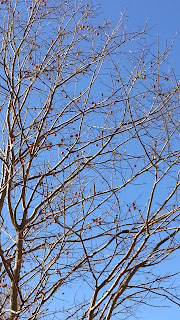About Demeter's Dish
Join me on a quest to identify as many plants as possible! Hikers, backpackers, and other sportsman who spend time roaming around can boost nutrition while on the trail. I also make wine and jelly with wild edibles, so we'll look at wild food in the kitchen, too!
We can identify plants year round. Winter will be quite paltry, but we can still do some identification. If you live East of the Rockies, north of Florida and south of New England, then you should be able to find the same plants within a week or two of when I post them.
Please only use this as an introductory guide. Anyone thinking of foraging for wild food must identify with absolute, 100%, certainty before trying even a nibble! Plants are food, medicine, and poison. Be sure of what you eat!! You should identify a plant with three different guides before eating.
About Me
| I LOVE hiking and backpacking, and also finding wild edibles. Connecting with nature helps to reset my batteries. I always say there is not a problem that can't be fixed by an hour in the woods. I lead hikes and backpacking trips with a local meetup group, and love taking new backpackers into the wilderness. Life is too short to sit around, so I am determined to get out, have fun, and make memories! |
|---|









